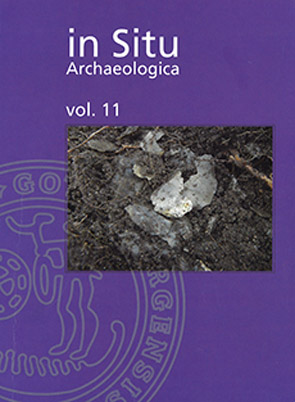Kultberget på Stora Holm
DOI:
https://doi.org/10.58323/insi.v11.13240Keywords:
Monument, Hillock, graves, flint, Late Neolithic, Bronze Age, Iron Age, tool manufacturing residualsAbstract
Tuve 46 was a complex monument, a hillock which people have taken the trouble to cover with stones. Among the stones were graves, mounds of burnt stones, a special mound of stones at the highest point, a cult building and on one side of the hillock were post-holes, hearths, cooking-pits and the like. On the hillock were also several concentrations of flint flakes and a few broken or unfinished flint tools. The site has mainly been used during two periods of time, one is the late Neolithic, the other is the Bronze Age
and Early Iron Age.
The concentrations of flint flakes are interpreted as residuals of tool manufacturing. It seems most of them were manufactured elsewhere, though. Only one or two were made at the place where the flints were found. The stone-covered hillock with its different constructions is interpreted as a cult site with a possible ‘Harg’ at the top.
Downloads
Downloads
Published
How to Cite
Issue
Section
License
Authors contributing to In Situ Archaeologica agree to publish their articles under a Creative Commons License. This gives third party different rights to use the material under certain conditions. These rights is defined by which license the article is published and it is the third partly responsibility to ensure that the license is fullfilled in any re-use of the material. Authors always retain copyright of their work and any re-use of the material presumes that appropriate credit is given the author, a link is provided to the license, and any changes made are clearly indicated.



